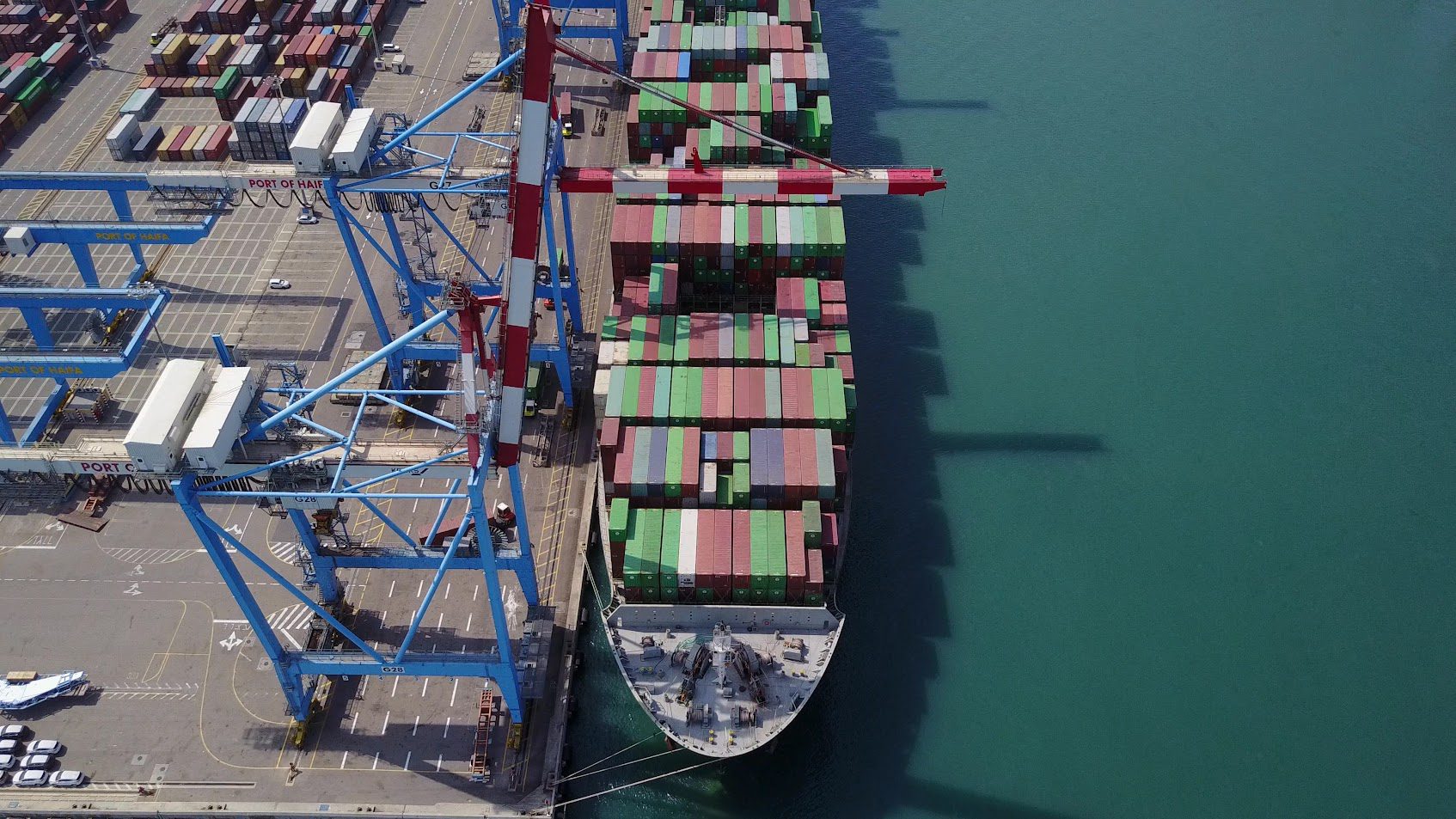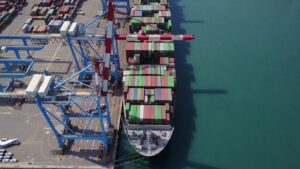

SSA Marine, a subsidiary of Carrix, is a leading provider of cargo handling and terminal operation services with a global presence, including over 240 locations across five continents. As part of Carrix, SSA Marine has adopted an environmental policy and action plan, committing to environmental sustainability and the incorporation of best practices in their operations, as well as the adoption of the California Air Resources Board’s (CARB) Advanced Clean Truck regulation. The company has also made significant progress in decarbonization, including the conversion of Rubber tyred gantry (RTG) cranes from diesel to electric in Manzanillo, Mexico, and the implementation of shore power at 19 berths in 6 facilities on the U.S. West Coast. These port electrification initiatives resulted in the reduction of over 38,000 metric tons of CO2 in 2021.
In an interview with e-Mission Control, SSA Marine employee Joe Carrillo, who has been with the company since 2007 and currently works with port operations in several locations, discussed his goal of transitioning all of the company’s fleets to zero-emission. To this end, SSA Marine has partnered with Wiggins on electric forklifts and has purchased 18 metric ton capacity (36,000 pound) forklifts for the handling of agricultural products and steel commodities.
SSA Marine’s commitment to sustainability and environmental responsibility extends beyond the adoption of clean technologies and emission reduction efforts. The company also actively engages in community outreach and partnerships, as well as waste reduction and resource conservation initiatives.
One example of SSA Marine’s community engagement is the development of the “Green Gateway” program, which aims to enhance the environmental performance of marine terminals and supply chains through collaboration with stakeholders such as port authorities, shippers, and trucking companies. The program focuses on improving air quality, reducing greenhouse gas emissions, and promoting the use of alternative fuel vehicles.
In addition to the Green Gateway program, SSA Marine has also implemented a number of waste reduction and resource conservation measures. These include the implementation of recycling programs for materials such as cardboard, plastic, and metal, as well as the use of reusable containers and the promotion of paperless communication.
SSA Marine’s efforts to reduce waste and conserve resources have been recognized by various industry organizations. The company has received the Environmental Protection Agency’s (EPA) SmartWay Excellence Award for its efforts to reduce fuel consumption and greenhouse gas emissions, as well as the American Association of Port Authorities’ (AAPA) Environmental Improvement Award for its waste reduction and resource conservation initiatives.
SSA Marine’s commitment to sustainability and environmental responsibility extends far beyond its adoption of clean technologies and emission reduction efforts. The company actively engages in community outreach and partnerships, as well as waste reduction and resource conservation initiatives, and has been recognized for its efforts by various industry organizations. SSA Marine’s dedication to sustainability and the environment is a key part of its mission as a global leader in cargo handling and terminal operations.
With hard work in port electrification comes recognition. In May of 2022, SSA Marine was honored with an ACT Expo Fleet Award from more than 140 fleets nominated from across North America. SSA Marine won ACT’s “Leading Off-Road Fleet” for operating a wide range of hybrid-electric and battery electric container handling equipment in its Oakland and Long Beach facilities, among other green innovations.
SSA Marine also participates in Green Marine certification. “We’re committed to actively participating in enhancing environmental performance in the marine terminal industry,” said SSA Marine’s CEO, Knud Stubkjaer in a news release. “Joining Green Marine’s comprehensive environmental program aligns with our commitments to incorporating best practices in each region that we operate.”
SSA Marine received one grant from Zero- and Near Zero-Emission Freight Facilities (ZANZEFF) which helped with purchasing numerous pieces of equipment at different ports. SSA Marine also benefited from the CORE Voucher program for heavy-duty forklifts. CORE stands for Clean Off-Road Equipment Voucher Incentive Project. It is a $125 million project intended to encourage California off-road equipment users to purchase or lease currently commercialized zero-emission off-road equipment. Through CORE, SSA was able to purchase 12 heavy duty electric forklifts in Stockton and 14 in West Sacramento to replace diesel forklifts.
The Volkswagen (VW) Mitigation Trust (also known as the Trust or Mitigation Trust) can also help ports electrify. The trust provides funding opportunities for specified eligible actions that are focused mostly on “scrap and replace” projects for the heavy-duty sector, including forklifts and port cargo handling equipment and commercial marine vessels. Existing vehicles must be scrapped and new vehicles must be zero-emission. Apply here.
Investigate more grant funding and tax incentives at our dedicated funding page.
Clean fuel programs, which are currently active in California, Oregon, and now Washington, aim to promote the use of cleaner, low-carbon transportation fuels and to support the production of these fuels. These programs are designed to reduce greenhouse gas emissions, decrease reliance on petroleum in the transportation sector, and improve air quality.
A growing number of medium- and heavy-duty (MHD) zero-emission vehicles (ZEVs) at ports are eligible to generate credits under the California Low Carbon Fuel Standard, the Oregon Clean Fuels Program, and the recently launched Washington Clean Fuel Standard. In addition to traditional vehicles such as vans, trucks, trailers, and buses, a wide variety of custom applications at ports are being electrified and are also eligible for clean fuel credit generation, including:
“We want to be good stewards of the community, and good stewards of the bigger picture,” said Joe Carrillo. And while SSA Marine still uses some diesel forklifts, they will be retired in time. Joe finds that the electric forklift performance is comparable to a diesel forklift, meaning there is no sacrifice in productivity to electrify. “We want to be sure we’re always doing the right thing,” said Joe, “and doing the right thing is upping our standards every year and reducing emissions wherever we can.”